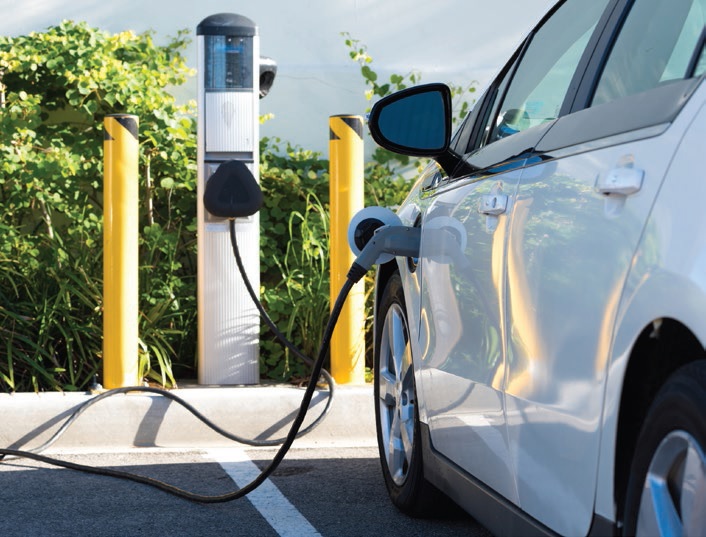Lubricants and electric vehicles
R. David Whitby | TLT Worldwide July 2018
Will our products really vanish? Engine-oil decline of 2%-3% annually is more likely.

Electric vehicles and hybrids still require the same volumes of greases for wheel bearings as conventional vehicles.
© Can Stock Photo / mflippo
Currently there are two main types of electric vehicles on the world’s roads: plug-in electric vehicles (PEVs) and hybrid-electric vehicles (HEVs). A PEV is any vehicle that can be recharged from an external source of electricity, and the electricity, stored in rechargeable battery packs, drives or contributes to drive the wheels. An HEV combines a conventional powertrain, usually gasoline or diesel, with some form of electric motor. With HEVs, the powertrain can either supply electricity directly to a drive motor or, more often, charge a battery which then supplies the drive motor.
Cumulative global sales of light-duty PEVs totaled more than three million by November 2017. By April 2016, more than 11 million HEVs had been sold worldwide since 1997. The leading areas are Japan, the U.S., China and Europe. Sales of light-duty PEVs achieved a 1.3% global market share of new car sales in 2017.
The consensus of market estimates suggests that the total number of cars and light vans on the world’s roads at the end of 2017 was 1.02 billion, of which 1.92% were either all electric or hybrid electric. While the sales growth of electric cars is currently much higher than those for conventional cars, using projected future growth rates, the total number of cars and light vans in 2035 is estimated to be 2.06 billion, and the total number of electric cars is estimated to be 363 million. This is 17.6% of the total number of cars, 65% of which are likely to be hybrid electric and 35% fully electric. Even when every car sold is either fully electric or hybrid electric, the number of older conventional cars on the world’s roads will still be higher. Similar observations and conclusions can be made about the world’s trucks and buses.
Many people in the lubricants business have expressed concern about the future for oils and greases used in cars, vans, trucks and buses. The estimates of future vehicle populations from now to 2035 and beyond should help to allay those concerns. For example, fully electric vehicles and HEVs will still require the same volumes of greases for wheel bearings as conventional vehicles, and the number of these vehicles is forecast to more than double between now and 2035. The same can be said for transmission fluids, almost all of which are likely to be automatic transmission fluids by 2035.
Undoubtedly the volumes of engine oils used in cars, vans, trucks and buses are highly likely to decline between now and 2035. The evidence from Europe during the last 30 years indicates that even as the number of vehicles has increased, the volumes of engine oils has decreased slowly, due mainly to longer oil drain intervals. The same trends are likely to occur in the future in other regions so that the doubling of the number of cars is likely to see a slight decline in the volumes of engine oils in the gasoline and diesel cars. The volumes of engine oils in fully electric cars and vans will be zero while the volumes of engine oils used in hybrid-electric cars and vans is likely to be around half that of conventional cars and vans. I estimate that the decline in the volumes of engine oils, globally, is likely to be 2%-3% per year, much less than some people in the lubricants business may have expected.
Another concern in the lubricants business is the future for metalworking and production engineering fluids used to manufacture cars, vans, trucks and buses. While many more components in vehicles are likely to be made using composite materials, the electric motors, the gasoline and diesel engines used in HEVs, the transmissions, bearings and other items will still need to be made using some metalworking and production engineering fluids. Because the total number of cars and light vans is projected to double, the volumes of metalworking and production engineering fluids may not change much between now and 2035.
There is one final observation. Because the number of vehicles is projected to double, so will the number of tires. The volumes of process oils in tires also are likely to double.
David Whitby is chief executive of Pathmaster Marketing Ltd. in Surrey, England. You can reach him at pathmaster.marketing@yahoo.co.uk.